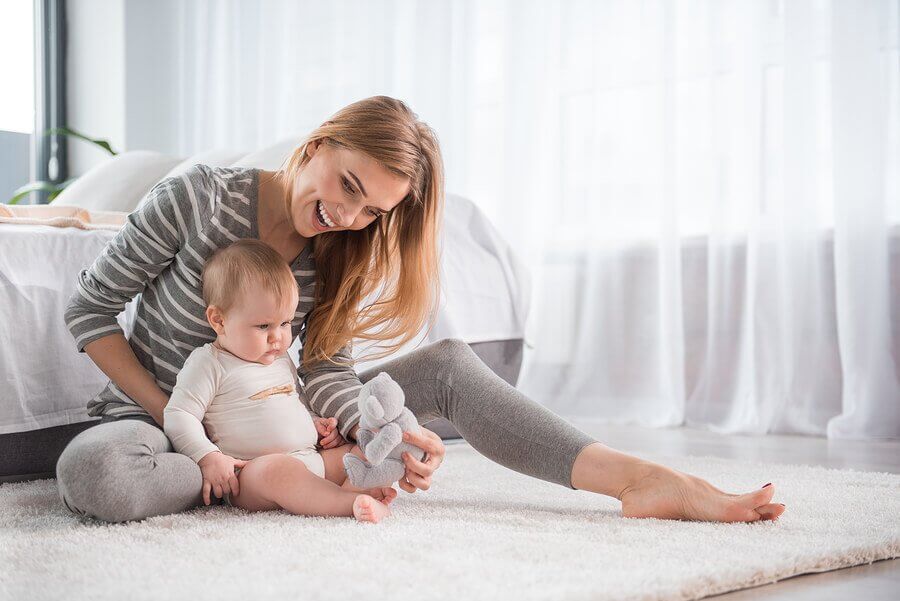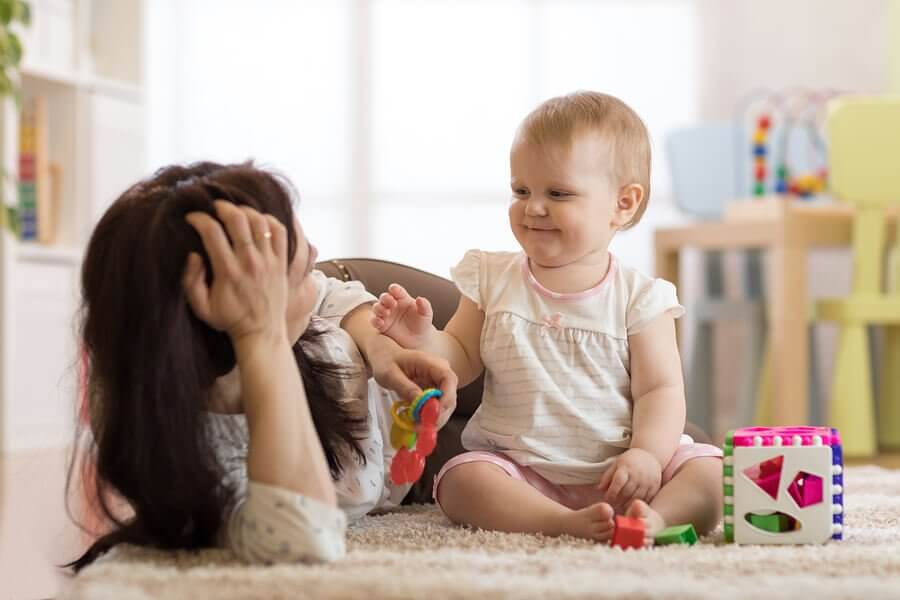How to Teach Your Baby to Sit Up

Parents often impatiently wait for their babies to perform their first feats. They can’t wait for their first smile, first crawl, and first steps. Although it’s all gradual, it’s natural to be anxious. Everyone wants to see their baby sit up on his or her own, and soon. If you’re interested in helping the process to teach your baby to sit up, keep reading.
First of all, many parents often wonder: is my baby ready to sit up on his/her own?
Watching your baby will give you signs to know if s/he’s ready, without harming his back. The best thing you can do is not force your baby. Your baby will eventually sit up on his/her own.
You have to give your baby the chance to spend as much time as possible at home in comfy clothes. Also, give your baby space to explore and exercise his/her body. As s/he reaches certain developmental milestones, your baby will learn to sit up.
How to Know if Your Baby Is Ready to Sit

It’s a mistake to force your baby for any stage of development. Every child is unique. There shouldn’t be a calendar that requires him to do certain things by certain days. Some babies take a long time, and other babies develop more quickly.
Similarly, some babies get their first teeth at three months, and others at 8. There isn’t a pre-established time. Therefore, you need to wait until your baby is ready. Some babies will start to sit up at 6 months, while others won’t until they’re 1.
However, you can watch for the following signs:
- If your baby can lay on his/her stomach and turn onto his back, then face down again, that means his/her muscles are getting stronger.
- Another sign is that your baby can sit up a little alone when s/he sits in his chair. It’s common for this to start happening around 6 months, but that isn’t a set date. It can happen between 8 and 9 months too.
Read this article: Four First-Time Mom Mistakes to Avoid
Sitting Up- A Special Moment
Learning to sit up means that your baby is making a huge advancement in his psychomotor development. This position helps babies strengthen their back muscles, as well as prevent discomfort and problems walking. As soon as they can sit up, their bodies will get ready to crawl and walk.
That’s why you don’t have to make your baby sit up before s/he’s ready. Let your baby’s muscles develop at their own rate. When your baby can sit up, s/he’ll feel more independent to play with his toys and other things that grab his/her attention.
Your babies senses are awakened to explore!
Discover: My Baby Always Wants To Be Held. Why?
Exercises to Teach Your Baby to Sit Up
Do you wonder if it’s possible to help teach your baby to sit up? While it’s best to wait for your baby to develop at his or her own pace, you can help your baby strengthen his/her muscles with some exercises. It won’t make your baby reach this skill faster, but you could make it easier.
Plus, doing these exercises is another activity where you can spend time with your baby. You can help him/her grow happily and healthily little by little.
Before starting these exercises to help your baby sit up, your child must have overcome certain milestones in psychomotor development. For example, your baby needs to be able to lift his/her head when s/he’s lying down and pretends to sit when you hold his/her hands.
Gymnastics with Your Baby

To do these stimulating exercises with your baby, throw a blanket on the floor and get ready to work. It’ll strengthen his/her abs, back, neck and arms! It’s also important to have plenty of favorite toys nearby.
- Place your baby on his/her back. Sit in front and hold your baby’s hands. Then, slowly lift him/her up little by little, then put him/her back down. Repeat this three or four times.
- Put your baby in your lap so s/he can lean back on you. Clap, or play another game like patty cake. Instantly, s/he’ll take his back off of you to sit on his/her own. You can help by holding your baby’s arms while s/he’s not leaning on you.
- Put your baby on his/her back. Put a flashy toy on top of your baby to tempt him/her to take it. Your baby will try to stretch slowly to grab it.
Don’t Overwhelm Your Baby
If you notice that your baby is losing interest in what you’re doing, stop the exercise sessions. Just like with any new milestone, the secret to getting your baby to sit up is to stimulate, not force. Don’t wear him out. Enjoy the moments you have together and keep trying. Soon, your baby will be ready for the first sitting photo!
All cited sources were thoroughly reviewed by our team to ensure their quality, reliability, currency, and validity. The bibliography of this article was considered reliable and of academic or scientific accuracy.
- Instituto Universitario de Educación Física. (2010). Manual de estimulación adecuada. Bebés recién nacidos hasta los 2 años. Universidad de Antioquía. Colombia. http://viref.udea.edu.co/contenido/pdf/229-manual.pdf
- Celayeta Lazcano, A., & Cuesta Abil, A. (2015). La fisioterapia como método de apoyo y de prevención durante el desarrollo del bebé sano de 0 a 2 años. http://eugdspace.eug.es/xmlui/bitstream/handle/123456789/527/Fisioterapia%20en%20el%20bebé%20sano%20de%200%20a%202%20años.pdf?sequence=1&isAllowed=y
This text is provided for informational purposes only and does not replace consultation with a professional. If in doubt, consult your specialist.








